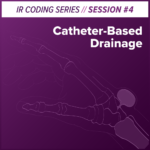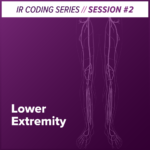“Inattentional blindness” is a fancy term to describe a very real compliance risk. There’s a great video illustrating the problem which will appear at the start of Fredrikson’s next free health law. webinar with it. That webinar will be Health Law 101 and you can register for that here.
Inattentional blindness occurs when you get so focused on one thing that you lose sight of other important factors. In the compliance context, this can cause you to come up with the wrong answer. Let me give you a great real-world example where I almost goofed.
My previous articles have analyzed how the Medicare mandatory claims submission found in Social Security Act § 1848(g)(4) arguably prevents you from permitting a Medicare patient to pay cash for a covered service. This practice can louse up a cash-only business because the provision says that if you provide a Medicare covered service to a Medicare beneficiary, you must submit a claim to Medicare unless the person providing it has opted out.
In the past I’ve discussed the risk that HIPAA exception that allows a patient to decline having their claim submitted to a payer may not apply to Medicare patients because the HIPAA provision doesn’t apply when claim submission is “otherwise required by law.” That makes the interaction between these provisions ambiguous.
What’s not ambiguous is that mandatory claim submission only applies to traditional Medicare. The statutory provision says that it applies to payments made under “this part” which is Medicare Part B. Medicare Advantage is found in Part C, a different part, so mandatory claim submission doesn’t apply to Medicare Advantage.
Having gone through this complicated analysis, when a client asked me “can we charge Medicare Advantage patients a cash only fee at our typical billed charges” I initially thought the answer would be an easy “yes.”
I almost feel victim to inattentional blindness. In my focus on mandatory claims submission, I failed to think about the fact that there’s also a regulation that limits the amount you can charge a Medicare Advantage patient. That regulation, 42 C.F.R. 422.214 says that “any provider that does not have in effect a contract establishing payment amounts for services furnished” to an MA plan “must accept, as payment in full, the amounts the provider could collect if the beneficiary were enrolled in original Medicare.” So, you can only bill the patient the amount that you would receive from Medicare.
But we’re not done with the inattentional blindness. That regulation uses the term “provider.” Frequent listeners will know that a “provider” is a facility, like a hospital or a skilled nursing facility or a home health agency — the types of things reimbursed under Part A. But in a truly sneaky and misleading way, 42 C.F.R. 422.2 defines a “provider” as both facilities and individuals. That’s just a trap because in most Medicare regulations an individual is a supplier, not a provider.
The bottom line is that Medicare research is really hard, and when you’re in the midst of it heed the words of Peter Gabriel and Kate Bush, don’t give up. Hopefully that will keep you out of trouble. But if you screw up, there’s no reason to be ashamed. When it comes to Medicare research, you know it’s never been easy.













